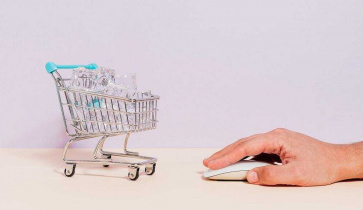
Ecommerce and Retail • Neto

Once you've established an online business with a loyal customer base and strong distribution network, it's hard to envision yourself doing anything differently.
In order to grow even further, online business's need to take a new concept onboard - going brick-and-mortar (B&M). The barriers to this are smaller than you think.
The first objection is that B&M doesn’t work for them. They’ve already invested in eCommerce, and adding an entire separate wing of the business will only complicate matters and pull resources from where they’re needed most. So they think they have to make a decision between the two.
The truth is you don’t have to choose. You’re not running two businesses, you’re managing a complete ecosystem where each part helps grow the whole. Running eCommerce and B&M as discrete entities rather than parts of the same business is a fantastic way to limit growth for your company.
Think about how you can get them to interact. A B&M location is a great way to pull people into your business as a whole. Having a place where people can window-shop and impulse buy also means you can upsell someone easier. If you sell clothes, then recommend a whole outfit. If you sell food or drink, recommend something to pair it with. Having complementary products in front of you where the customer can see them and touch them is a powerful tool to increase sales.
Once you’ve done the work of introducing people to your brand, repeat customers can easily and conveniently buy through your online store. If you have assisted someone in your clothing store to find a new shirt and they buy it, that person may end up falling in love with that style and order more over the internet. You’ve then turned 10 minutes of retail work into many sales – so you’re getting the benefit of the lower online overheads and they’re getting the satisfaction of great instore customer service.
You can also offer click and collect. This service has exploded in the last few years and is something every business should consider offering. Think about it from the customer’s point of view, if they came into your store and you didn't have the item they needed in stock, so they had to place a special order and come back again in two weeks - their experience would be awful. What’s significantly better for your customers is discovering what they would like online, ordering it themselves and then coming instore in a few weeks to collect (after paying no shipping fees or a reduced shipping rate). It's so important to manage customer expectations better with a hybrid approach to selling.
Many online business owners also see physical retail space as a bit of a dead end, lacking the agility of eCommerce. While you can’t rearrange an entire physical store with a flick of a CSS wand, retail spaces can be as lean and flexible as a business owner wants them to be.
If you’re a company that makes its own products (like a Clothing designer) or an instrument-maker or jeweller, turn your manufacturing location into a retail space. This is a great move if you’re company makes something people want to feel or wear before buying. Whether you make guitars, bikinis or earrings, your customers will appreciate the ability not only to pick out their own item but also to speak directly to the people responsible for making it. You’ll also – just by bringing together manufacturing and retail – sell more than just a product; you’ll be selling the product’s story. If you’re making something in a traditional style or doing something different with your process, people will want to know about it and see it. The fact that you manufacture on site is itself a great marketing tactic for your entire ecosystem.
Still undecided? You don’t have to commit half of your business to B&M to get a taste for it. Start gauging local interest by running a pop-up shop at your manufacturing location or in a well-trafficked area for a couple of weeks. Leverage your online profile and brand authority to drive people to the space and see what kind of business you can do. Is it self-sustaining? Does it take up resources you need for your online space? By the end of the trial run, you should have all questions answered.
The important thing is to decide is whether B&M is right for your industry, and in the right location. If you feel like you’re getting some traction and buzz but it’s not converting into sales, it mightn't be that your company is wrong for this tactic, but could be a problem of place.
A hybrid approach to B&M and online will not suit every business, but every business owner should take the time to decide if it will suit them. The first question to ask is ‘would I make more sales if people could reach out and touch my products?’ If you sell anything from jackets to vinyl records to antique clocks to earrings, the answer could be yes.